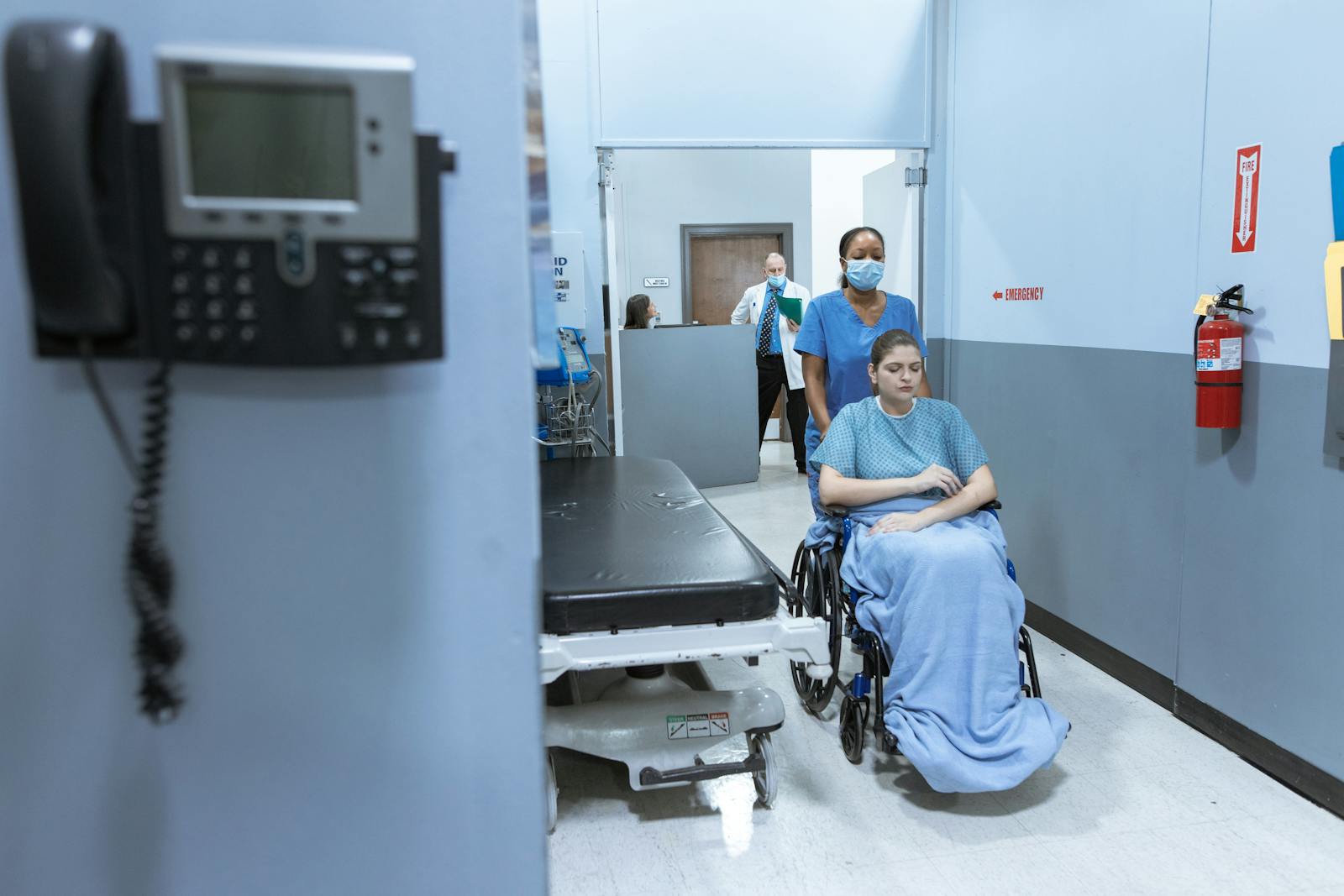Chronic coccydynia refers to persistent pain in the coccyx (tailbone) region, often due to trauma, poor posture, or secondary factors. Coccygectomy is a surgical procedure that removes part or all of the coccyx, typically employed when non-surgical approaches like physiotherapy, medication, and lifestyle changes have not effectively alleviated pain. Patient’s overall health, age, and severity of pain are key considerations in decision-making. Post-coccygectomy, pain management, wound care, and rehabilitation exercises form vital aspects of recovery. The procedure, while not without risks, can greatly improve quality of life in the long-term journey of managing chronic coccydynia. Further exploration can provide deeper understanding of these aspects.
Understanding Chronic Coccydynia
Chronic coccydynia, a intricate condition characterized by persistent, often debilitating pain in the tailbone region, demands a detailed understanding of its pathophysiology, diagnosis, and treatment options. It is a clinical diagnosis, indicating the absence of a universally accepted diagnostic standard. Coccydynia diagnosis typically involves a thorough patient history, physical examination focusing on the coccyx, and dynamic radiographic studies.
The prevalence of coccydynia is not well-documented due to its varying diagnostic criteria and patients’ reluctance to seek medical help for such a private and sensitive condition. However, the literature suggests that it is more common in females and people in mid-life.
Treatment options for coccydynia encompass conservative, interventional, and surgical measures. Conservative treatments include medications, physical therapy, and ergonomic adjustments. Interventional procedures, such as corticosteroid injections, are also employed. However, when conservative and interventional treatments fail to alleviate symptoms, coccygectomy, or surgical removal of the coccyx, is considered.
Root Causes of Coccydynia
The etiology of coccydynia spans several domains, with factors such as trauma, suboptimal posture, and other triggers playing pivotal roles. Trauma, specifically, is often a significant contributor, often resulting from incidents such as falls or childbirth that directly impact the coccyx. Additionally, chronic, poor posture can exert undue stress on the coccyx, instigating or exacerbating the condition.
Identifying Coccydynia Triggers
Understanding the specific triggers of Coccydynia, a condition characterized by tailbone pain, necessitates an in-depth exploration into its root causes, which can range from trauma to childbirth complications. It is essential to note that Coccydynia diagnosis often involves the identification of these triggers to formulate effective treatment strategies. Lifestyle modifications may be recommended, targeting any known triggers such as prolonged sitting or certain physical activities. Additionally, the identification of underlying causes such as obesity or poor posture can help refine these modifications. While many triggers are explicit, like direct injury or childbirth, others can be more elusive, requiring a meticulous diagnostic approach. Identifying these triggers is paramount in the management of Coccydynia, facilitating the development of personalized therapeutic modalities.
Role of Trauma
Delving into the role of trauma as a dominant root cause of Coccydynia, it’s evident that injuries to the coccyx, whether through falls, accidents, or sporting mishaps, can instigate a cascade of painful symptoms characteristic of this condition. The trauma impact can be direct or indirect, and depending on the severity, it can cause varying degrees of tailbone fractures. These fractures disrupt the normal anatomical structure, leading to dislocation or bruising of the coccyx, which manifests as coccydynia. A poorly healed fracture can form a painful pseudoarthrosis. Repeated trauma or a significant one-off impact may cause hypermobility or rigidity in the coccyx, both of which can stimulate chronic pain. Understanding the trauma mechanism helps in the effective management of coccydynia.
Posture and Coccydynia
Poor posture, a seemingly innocent but possibly harmful habit, can greatly contribute to the onset of coccydynia by exerting undue pressure on the coccyx, thereby leading to chronic tailbone pain. The correlation between posture and coccydynia is significant, as it underlines the root causes of this painful condition.
- Sitting Adjustments: Prolonged sitting, especially on hard surfaces, can exacerbate coccydynia. Proper adjustments such as sitting upright, using a coccyx cushion and taking frequent breaks can alleviate pressure on the tailbone.
- Exercise Benefits: Regular physical activity, particularly exercises that strengthen the core and gluteal muscles, can improve posture, relieve coccyx pain, and prevent coccydynia recurrence.
- Ergonomic Workspaces: An ergonomically designed workspace can promote good posture, reducing the risk of coccydynia and other posture-related ailments.
Symptoms Associated With Coccydynia
While coccydynia is primarily characterized by localized pain and tenderness at the tailbone area, patients may also experience a range of other symptoms such as discomfort during sitting, pain during bowel movements, and a deep ache in the region. These symptoms can fluctuate in intensity and duration, complicating Coccydynia Diagnosis and pointing towards the need for individualized Therapy Options.
The onset of symptoms is often gradual, although cases of sudden onset following trauma, such as a fall, are not uncommon. Other lesser-known symptoms include pain during sexual intercourse and general discomfort when switching from a sitting to standing position. Moreover, the severity of pain may increase in women during menstruation or pregnancy due to the increased pressure on the coccyx.
Patients may also report referred pain in the lower back and legs, and occasionally, a sensation of a ‘lump’ in the tailbone area. The manifestation of these symptoms is critical in differentiating coccydynia from other conditions with similar presentations, such as lumbar spine disorders or pudendal neuralgia. The grouping of these symptoms often directs the diagnostic process and subsequent therapeutic interventions, emphasizing the importance of a thorough clinical evaluation in coccydynia management.
Non-Surgical Treatment Options
Before progressing to surgical interventions such as coccygectomy, various non-surgical treatment options for chronic coccydynia are typically considered. These alternatives encompass pain management techniques, physiotherapy approaches, and medication options. An in-depth examination of each of these therapeutic strategies will provide a better understanding of their efficacy and applications in managing coccydynia.
Pain Management Techniques
In managing the pain associated with chronic coccydynia, several non-surgical treatment options have proven to be effective, which include medication, physical therapy, and lifestyle modifications.
- Medication: Oral nonsteroidal anti-inflammatory drugs (NSAIDs) are commonly used to reduce inflammation and alleviate pain. Analgesics may be prescribed for more severe pain.
- Acupuncture benefits: This traditional Chinese medicine technique has been known to relieve pain by stimulating the body’s own pain-relieving chemicals. It’s considered particularly effective for chronic pain.
- Mindfulness practice: Techniques such as meditation and deep breathing exercises can help manage pain by reducing stress and promoting relaxation.
These methods, when properly employed, can greatly improve a patient’s quality of life, through the management of coccydynia pain. Detailed analysis and customization of these techniques are essential for the best results.
Physiotherapy Approach
A wide array of physiotherapy techniques offer significant non-surgical interventions for coccydynia, focusing on pain reduction, improving mobility, and promoting overall all-encompassing functional recovery. Among these, pelvic floor exercises have been identified as particularly beneficial. These exercises, designed to strengthen the muscles of the pelvic floor, can reduce pressure on the coccyx, thereby alleviating symptoms. Regular performance of these exercises can improve posture and reduce the likelihood of further injury.
In tandem with these physical exercises, mindfulness techniques can be used to manage the chronic pain associated with coccydynia. These mental strategies can improve coping mechanisms, reduce stress, and enhance the mind-body connection, further enhancing the efficacy of the physiotherapy approach. The combination of these approaches can provide a thorough and effective non-surgical treatment option.
Medication Options
Numerous pharmacological interventions serve as viable non-surgical treatment options, each with its unique mechanism of action targeted towards mitigating the chronic pain associated with coccydynia. These strategies typically involve a holistic approach, integrating medication, alternative therapies, and diet influence.
- Medication: Non-steroidal anti-inflammatory drugs (NSAIDs) and analgesics are often used to reduce inflammation and pain. In severe cases, local anesthetic injections or nerve blocks may be applied.
- Alternative Therapies: Techniques such as acupuncture, chiropractic adjustments, and cognitive-behavioral therapy can complement traditional medication, enhancing its effectiveness.
- Diet Influence: A balanced diet rich in anti-inflammatory foods may contribute to pain reduction, supporting the overall treatment plan.

When to Consider Coccygectomy
Weighing the option of coccygectomy becomes important when conservative treatments for chronic coccydynia, such as medication and physiotherapy, cease to provide sufficient relief. It becomes unavoidable to contemplate surgery alternatives when the existing therapies fail to alleviate the pain, and the quality of life of the patient deteriorates greatly.
The psychological impact of chronic coccydynia cannot be underestimated. Persistent pain can lead to mood changes, stress, depression, and a reduced capability to perform daily activities. The decision to undergo coccygectomy should be made after a detailed and analytical discussion between the patient and the healthcare provider, taking into account the patient’s overall health, age, and the intensity and duration of the pain.
Coccygectomy, being an invasive procedure, should be considered only after exhausting all non-invasive options. It is important to make sure that the patient has a clear understanding of the potential risks and outcomes of the surgery. The decision should not be based solely on the severity of the pain, but also on a thorough evaluation of the patient’s physical and psychological health.
Preparing for Coccygectomy
The process of preparing for a coccygectomy can be divided into two major parts: pre-surgery precautions and post-operative care. Pre-surgery precautions involve measures that aim to mitigate risks and maximize the success of the surgery. Meanwhile, post-operative care is focused on facilitating recovery and managing potential complications following the procedure.
Pre-Surgery Precautions
Effective preparation for a coccygectomy, a surgical procedure to remove the coccyx or tailbone, involves adherence to a series of essential precautions that can greatly impact the surgery’s success and the patient’s recovery process.
- Dietary Changes: Prior to surgery, patients should adjust their diet to support overall health and optimize recovery. This could include increased protein intake for tissue repair, and reducing consumption of substances like alcohol and caffeine that may interfere with anesthesia or medications.
- Psychological Support: It’s important to prepare mentally for the procedure. Support from a psychologist or counselor can help manage anxiety and set realistic expectations about the surgery and recovery period.
- Physical Preparation: Regular exercise, as advised by the physician, can strengthen the body and help to endure the stresses of surgery and the subsequent recovery phase.
Post-Operative Care
Post-surgical care for a coccygectomy, an integral component of the overall recovery process, necessitates a meticulous strategy aimed at managing pain, promoting wound healing, and restoring physical function to guarantee the patient’s gradual return to normal activities. Wound care is paramount in the immediate post-operative period to prevent infection and promote healing. This includes regular dressing changes and monitoring for signs of infection, such as increased pain, redness, or discharge.
Rehabilitation exercises, under the guidance of a physical therapist, are essential in the subsequent weeks to restore strength and flexibility. These exercises should be initiated gradually, taking into account the patient’s pain levels and progress in healing. Regular assessment and modification of the exercise regimen will ensure an ideal and individualized approach to recovery.
The Coccygectomy Procedure Explained
To fully understand the intricacies of a coccygectomy, it is crucial to explore the detailed stages of this specific surgical procedure. A coccygectomy, while not the first line of defense due to its invasive nature and the coccygectomy cost, is sometimes the only option to alleviate chronic coccydynia when coccygectomy alternatives have been exhausted.
- Preoperative Preparations: The patient undergoes preparatory processes, including diagnostic tests and evaluation of overall health status. This stage also involves discussions about the procedure, expected outcomes, and potential complications, providing a thorough understanding of the coccygectomy cost and possible coccygectomy alternatives.
- Surgical Procedure: The patient is placed under general anesthetic. A small incision is made in the skin above the coccyx, and the surrounding muscles are carefully separated to expose the bone. The entire coccyx, or only the problematic segment, is then removed.
- Postoperative Measures: The incision is closed with stitches, and a sterile dressing is applied. Pain management protocols are initiated immediately post-surgery.
This procedure, while complex, can provide significant relief from persistent coccydynia. However, decision-making must always be focused on a personalized assessment of the patient’s condition, the potential benefits, and the associated risks.
Post-Operative Care and Recovery
In the journey towards a patient’s full recovery after a coccygectomy, meticulous attention to post-operative care is essential, with a focus on managing pain, monitoring for complications, and facilitating physical rehabilitation. Central to this process is wound healing, which involves regular cleaning and dressing changes to prevent infection and promote ideal healing conditions. Any signs of delayed healing or complications such as increased pain, inflammation, or discharge should be promptly addressed by healthcare professionals.
Analgesics are typically prescribed to manage post-operative pain, and patients are often encouraged to gradually resume light activities to promote circulation and prevent muscle stiffness. Physical rehabilitation may include targeted exercises to strengthen the pelvic muscles and improve flexibility. This is supported by ongoing assessments to evaluate progress and adjust management strategies as necessary.
Emotional support forms an integral part of recovery. Dealing with post-surgical pain and limited mobility can be challenging, potentially leading to feelings of anxiety or depression. Therefore, ensuring adequate psychological support, through counselling or support groups, is critical to assist patients in coping with the emotional aspects of their recovery journey.

Potential Risks and Complications
While coccygectomy generally proves to be a beneficial surgical intervention for chronic coccydynia, it is not without its share of potential risks and complications that must be carefully considered. These risks are intrinsic to any surgical procedure and are particularly important to understand when considering surgical alternatives.
- Postoperative Infection: As with any surgical procedure, there is a possibility of infection post-surgery. This could lead to additional treatments, prolonged recovery periods, and possible additional surgeries.
- Persistent Pain: There is a chance that the coccygectomy may not completely alleviate the pain from coccydynia. In some cases, patients have reported continued or even increased pain post-surgery.
- Postoperative Complications: These could include wound healing complications, rectal injuries, or sacral plexus injuries. Such complications can lead to further medical problems and extended recovery periods.
As a component of coccydynia prevention, it is crucial to weigh these potential risks against the potential benefits of a coccygectomy. An open, detailed discussion with the healthcare provider can help patients make a well-informed decision about their treatment plan, keeping in mind the potential risks and complications.
Success Rates of Coccygectomy
Despite the potential risks, coccygectomy’s success rate in alleviating chronic coccydynia is remarkable, with a significant proportion of patients reporting considerable pain reduction post-surgery. The recovery timeline, however, can be somewhat protracted, with many patients requiring several weeks to months of convalescence. Nevertheless, the enduring relief from persistent discomfort substantially outweighs this temporary inconvenience for many individuals.
A detailed analysis of clinical studies reveals that success rates for coccygectomy can range from 60% to 90%, underlining the efficacy of this surgical intervention. The variation in these results is likely due to multiple factors, including surgical techniques, individual patient characteristics, and the severity of the original condition.
Surgical alternatives to coccygectomy do exist, with non-invasive methods such as physiotherapy, medication, or corticosteroid injections providing temporary relief for some patients. However, these alternatives often fail to provide a definitive solution for chronic coccydynia, making coccygectomy a more appealing choice for those seeking long-term pain reduction. It is worth noting that the decision to proceed with coccygectomy should be made in consultation with a healthcare professional, taking into account the patient’s overall health status, pain level, and individual preferences.
Living Life Post-Coccygectomy
Following a successful coccygectomy, the patient’s post-operative journey involves a unique set of experiences and adaptations, which play a significant role in the overall satisfaction and quality of life. It is paramount to understand that this journey is not exclusively physical but also encompasses profound mental health and emotional dimensions.
Three critical aspects of the post-coccygectomy life include:
- Physical Adaptation: Patients need to adapt to a new body dynamic. This process may involve physical therapy and adjustments in daily activities to minimize discomfort and optimize mobility.
- Mental Health Management: Chronic pain, as experienced before surgery, often leaves residual stress and anxiety. Proactive mental health care, including psychotherapy and mindfulness techniques, can be beneficial in managing these lingering effects.
- Emotional Support: Emotional support from family, friends, and support groups can be a significant factor in the recovery period. These networks provide a safe space for patients to express their feelings and experiences, fostering resilience and positive coping strategies.
Frequently Asked Questions
Are There Any Lifestyle Changes That Can Help Prevent Coccydynia?
To prevent coccydynia, incorporating a diet rich in anti-inflammatory foods is beneficial. Moreover, posture improvement, particularly while sitting, can greatly reduce the risk of developing this condition and promote overall spinal health.
What Is the Cost of Coccygectomy Surgery?
The cost of coccygectomy surgery varies greatly depending on factors such as geographical location, surgeon’s expertise, hospital charges, insurance coverage, and the extent of post-surgery care needed. It’s important to consult with healthcare providers for accurate estimates.
Are There Any Specific Exercises That Can Help Strengthen the Coccyx Post-Surgery?
Yes, post-surgery exercises targeting pelvic floor muscles can be beneficial. However, it’s important to consult with a physiotherapist for a tailored rehabilitation plan, considering factors like post-surgery nutrition and the overall rehabilitation timeline.
What Are the Chances of Coccydynia Reoccurring After a Coccygectomy?
The likelihood of coccydynia reoccurrence post-coccygectomy largely depends on the accuracy of the initial coccydynia diagnosis and the individual’s recovery time, which can vary based on personal health factors and post-surgery care.
Can Coccydynia and a Coccygectomy Impact Fertility or Pregnancy?
Coccydynia and a coccygectomy generally do not directly impact fertility or pregnancy. However, coccydynia’s influence on the menstrual cycle and recovery time from a coccygectomy could potentially interfere with comfort during pregnancy.

